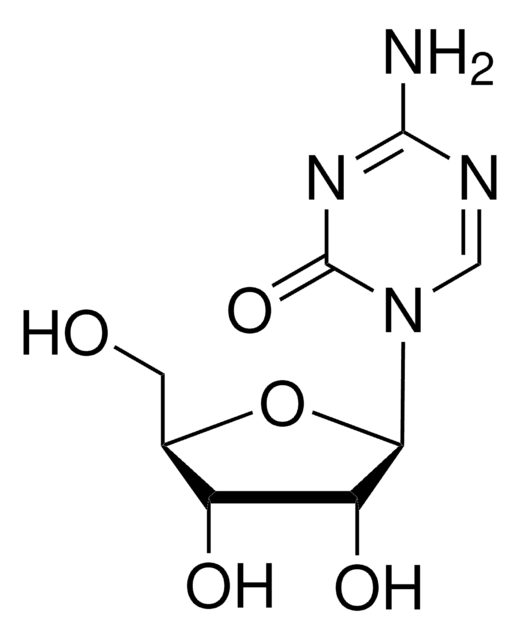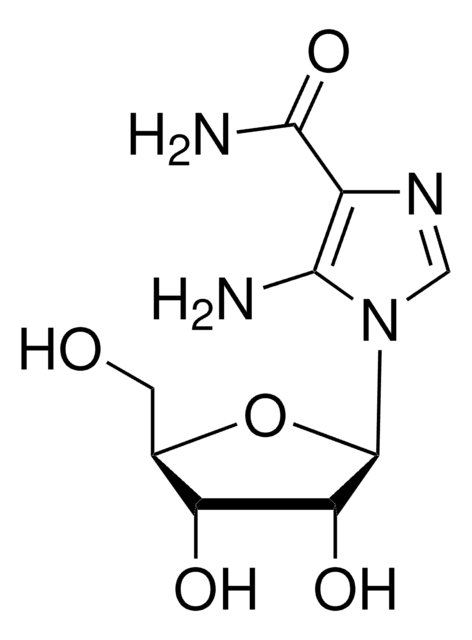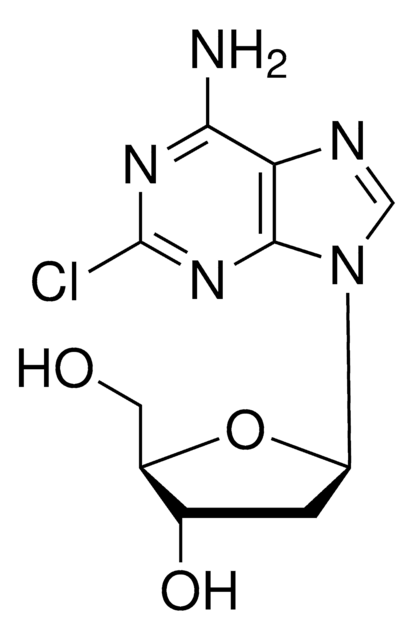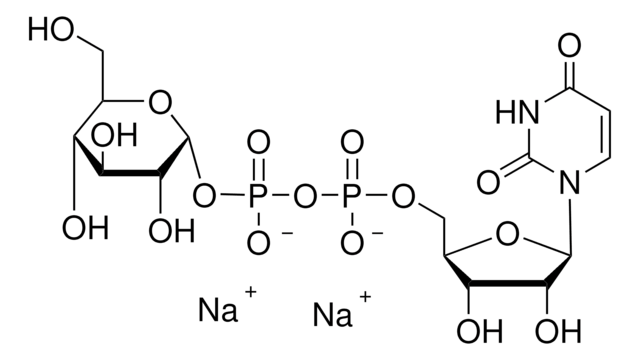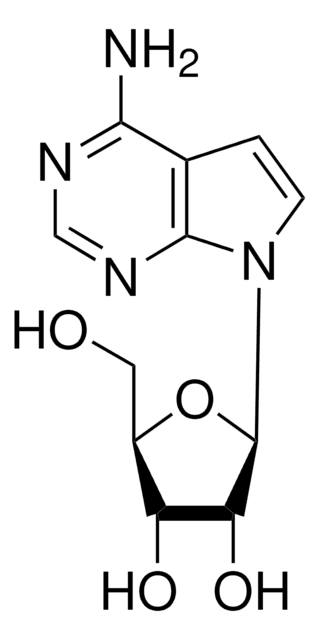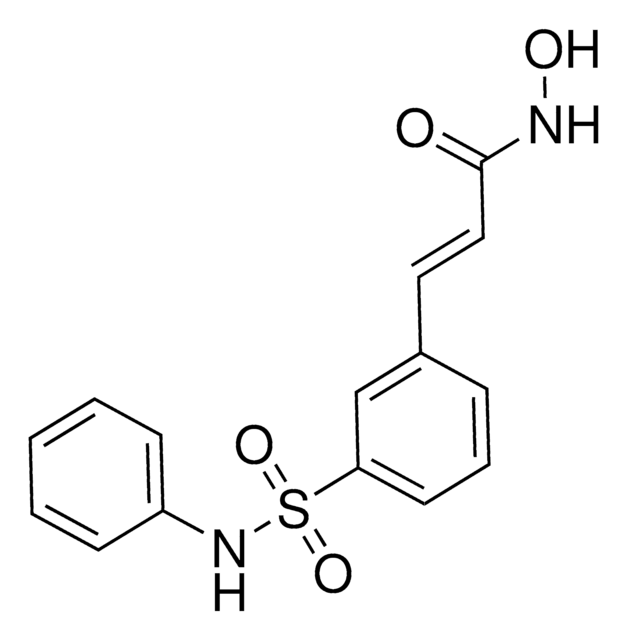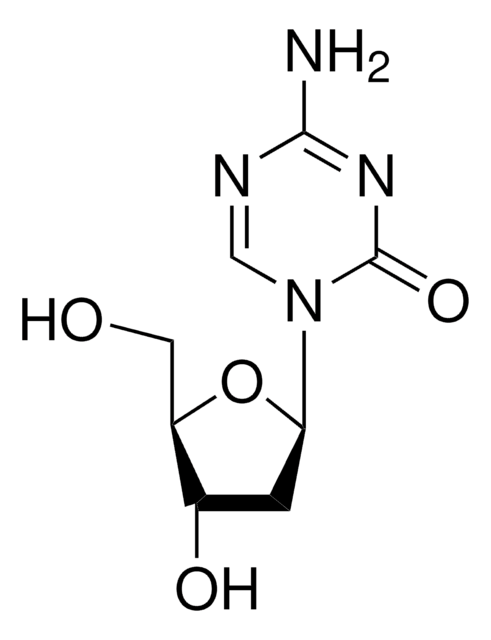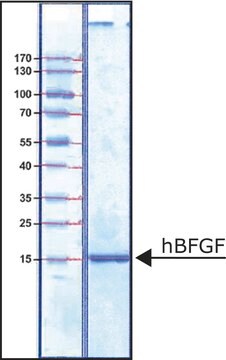D8296
3-Deazaadenosine
Synonym(s):
4-Amino-1-(β-D-ribofuranosyl)-1H-imidazo(4,5)-pyridine
About This Item
Recommended Products
form
powder
Quality Level
storage temp.
2-8°C
SMILES string
Nc1nccc2n(cnc12)[C@@H]3O[C@H](CO)[C@@H](O)[C@H]3O
InChI
1S/C11H14N4O4/c12-10-7-5(1-2-13-10)15(4-14-7)11-9(18)8(17)6(3-16)19-11/h1-2,4,6,8-9,11,16-18H,3H2,(H2,12,13)/t6-,8-,9-,11-/m1/s1
InChI key
DBZQFUNLCALWDY-PNHWDRBUSA-N
Gene Information
rat ... Adora1(29290) , Adora2a(25369) , Adora3(25370)
Application
- to study the effect of m6A modification on suppressor of cytokine signaling 2 (SOCS2) expression in colon cancer cells
- to study its effects on the expression of influenza A virus (IAV) proteins in human lung epithelial cell line
- to evaluate its effects on the replication of SV40 virus in BSC40 cells
Biochem/physiol Actions
Storage Class Code
11 - Combustible Solids
WGK
WGK 3
Flash Point(F)
Not applicable
Flash Point(C)
Not applicable
Personal Protective Equipment
Choose from one of the most recent versions:
Already Own This Product?
Find documentation for the products that you have recently purchased in the Document Library.
Customers Also Viewed
Related Content
We offer agonists, antagonists, modulators and other bioactive small molecules for immune system signaling target identification and validation, as well as a variety of antibiotics, antivirals, and antifungals.
Our team of scientists has experience in all areas of research including Life Science, Material Science, Chemical Synthesis, Chromatography, Analytical and many others.
Contact Technical Service